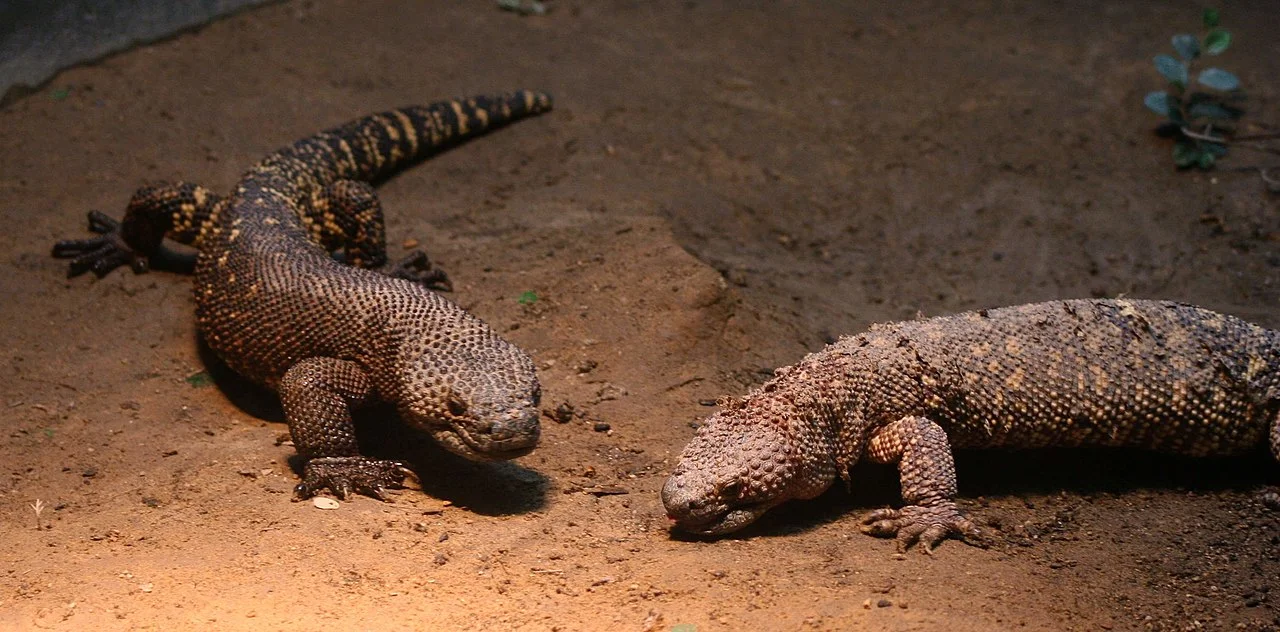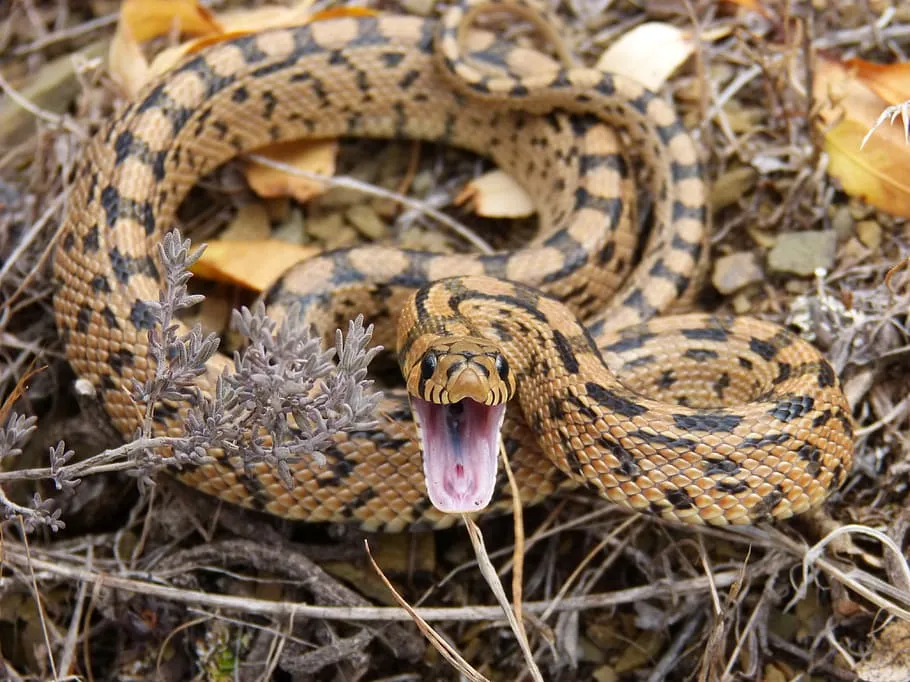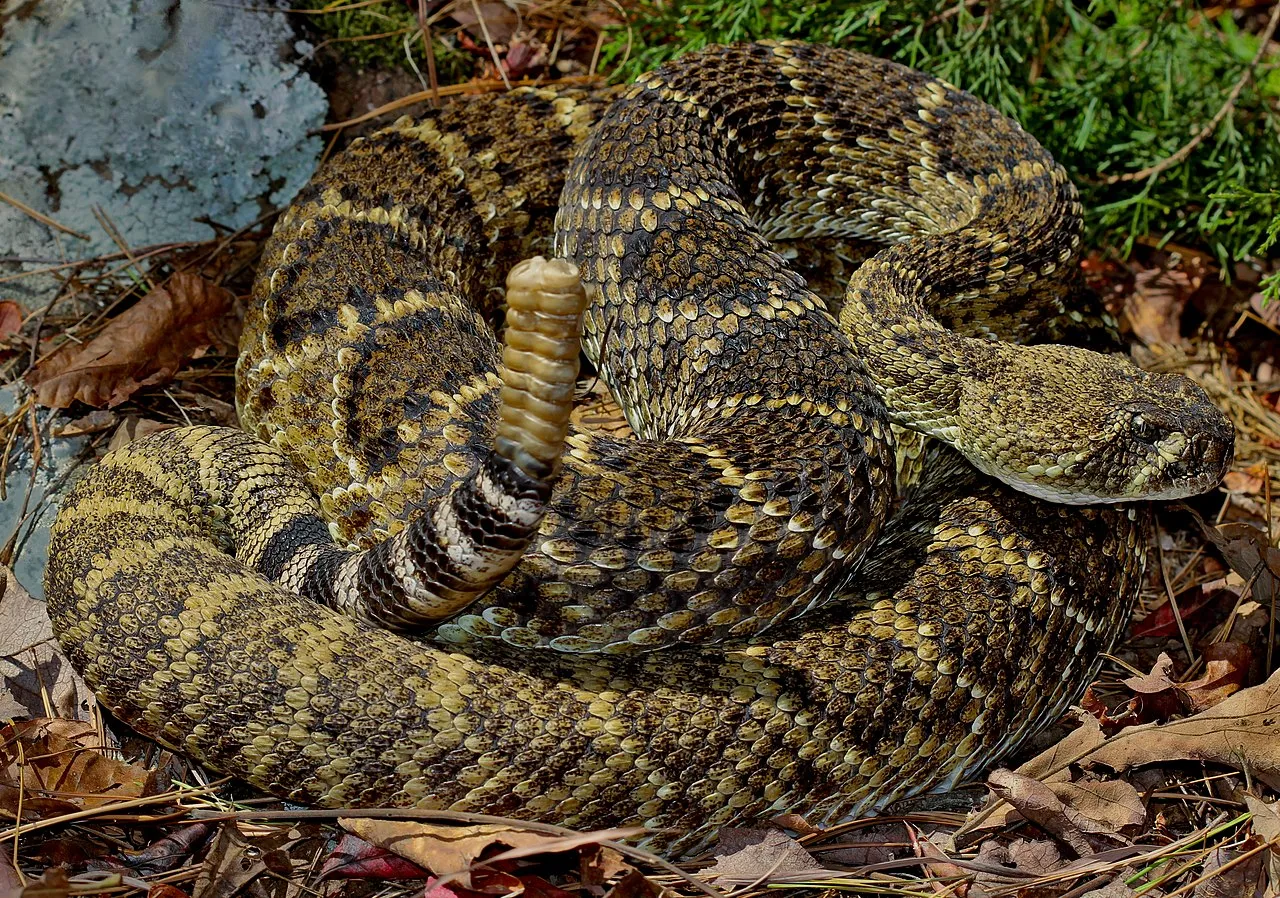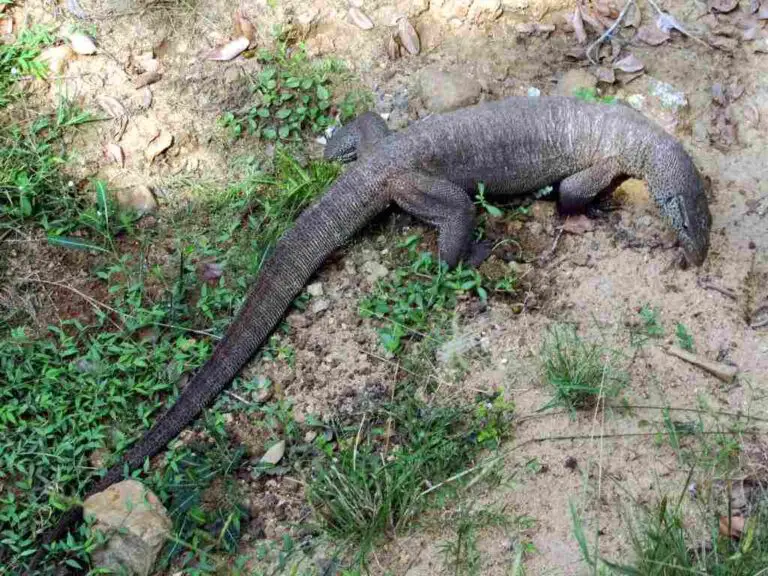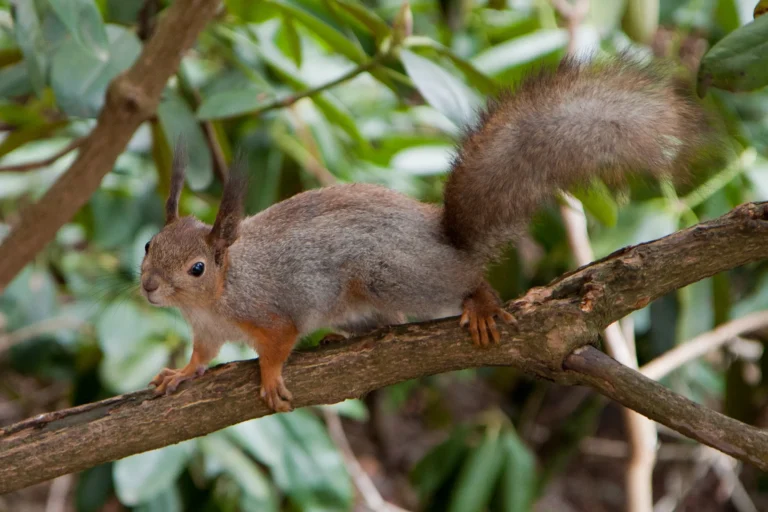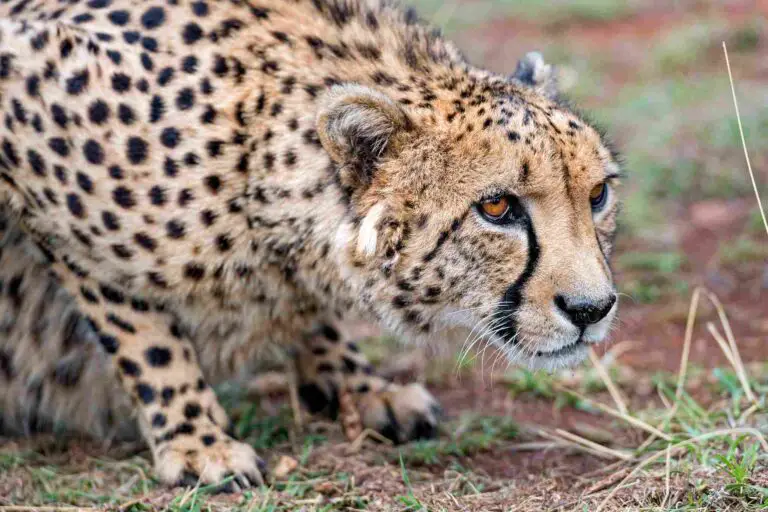23+ Dangerous Animals In Mexico Discussed
Examples of dangerous animals in Mexico are the American Crocodile, Mexican Rattlesnake, Black Widow Spider, and Fer-de-Lance snake. These predators pose significant risks to humans due to their venomous bites or aggressive behavior when threatened. Additionally, species like the Jaguar and Puma, while not typically aggressive toward humans, can become dangerous if encountered unexpectedly, especially in their natural habitats.
1. American Crocodile
The American Crocodile (Crocodylus acutus) is a formidable predator native to Mexico, typically found in coastal areas, estuaries, and mangrove swamps. Recognizable by its large size and long, slender snout, this crocodile is known to grow up to 20 feet in length, making it one of the largest crocodile species. Although it generally prefers to avoid human contact, the American Crocodile can be extremely dangerous if provoked or if it feels threatened. Encounters with humans can occur near their habitats, and while attacks are rare, they can be fatal. As a powerful predator, it feeds on a variety of prey, including fish, birds, and small mammals, but is capable of taking down larger animals. Conservation efforts are in place to protect this species, but caution is advised when in areas known to be American Crocodile territory.
2. Mexican Rattlesnake
The Mexican Rattlesnake (Crotalus spp.) is a venomous serpent found throughout various regions of Mexico, often inhabiting desert, grassland, and rocky areas. Identified by its distinct rattling sound, which serves as a warning signal, this species possesses potent venom that can cause severe injury or even death if bitten. While they typically avoid confrontations with humans, accidental encounters can occur, especially in areas where their habitat overlaps with human activities. Awareness of their presence and understanding of their behavior are crucial for minimizing the risk of snakebite incidents.
3. Black Widow Spider
The Black Widow Spider (Latrodectus spp.) is notorious for its venomous bite, which contains neurotoxins that can cause severe symptoms in humans. Found across Mexico, these arachnids prefer dark, secluded areas such as woodpiles, sheds, and under rocks. Identified by their shiny black bodies and red hourglass-shaped markings, female black widows are especially venomous. While fatalities are rare with proper medical treatment, their bites can result in intense pain, muscle cramps, and other neurological effects. Vigilance and caution are necessary when encountering these spiders to prevent potentially harmful interactions.
4. Brown Recluse Spider
The Brown Recluse Spider (Loxosceles spp.) is another venomous arachnid found in Mexico, known for its reclusive nature and potentially harmful bite. Typically dwelling in dark, undisturbed areas such as closets, basements, and woodpiles, these spiders have a violin-shaped marking on their cephalothorax, which helps identify them. While they usually avoid human contact, accidental encounters can occur, leading to bites that may cause tissue necrosis and other systemic effects. Prompt medical attention is essential if bitten by a brown recluse spider to prevent complications and promote healing.
5. Red Widow Spider
The Red Widow Spider (Latrodectus bishopi) is a lesser-known but equally dangerous relative of the black widow, found in select regions of Mexico. With its distinctive red coloring and neurotoxic venom, the red widow poses a threat to humans who may unknowingly encounter it in its preferred habitats, such as scrublands and forests. Although encounters with this species are relatively rare compared to the more common black widow, its venom can induce severe symptoms similar to those caused by other Latrodectus species. Awareness of their presence and cautious behavior in areas where they may reside are essential for minimizing the risk of bites.
6. Scorpion

Scorpions are a diverse group of arachnids found throughout Mexico, with some species known for their venomous stings. The bark scorpion (Centruroides spp.) is particularly notorious for its potent venom, which can cause intense pain, muscle spasms, and other serious symptoms. While most scorpions prefer dark, secluded habitats such as under rocks and in cracks, they can sometimes venture into homes, leading to accidental stings. The severity of the sting depends on the species and the victim’s sensitivity, with children and the elderly being more at risk. Swift medical treatment is crucial for severe reactions to scorpion stings.
7. Mexican Beaded Lizard
The Mexican Beaded Lizard (Heloderma horridum) is a large, venomous reptile native to Mexico’s arid regions. It has a distinctive appearance, with a heavily textured, beaded skin and a robust body. Although it moves slowly and generally avoids confrontation, it can become aggressive when threatened. Its venomous bite, though rarely fatal to humans, can cause intense pain, swelling, and other severe symptoms. Due to its size and venomous potential, caution is advised when encountering this lizard in the wild, and it should not be approached or provoked.
8. Fer-de-Lance (Bothrops asper)
The Fer-de-Lance (Bothrops asper) is one of the most dangerous snakes in Mexico, known for its highly venomous bite and aggressive demeanor. This pit viper is often found in tropical forests, agricultural areas, and near human settlements, which can lead to dangerous encounters. Its venom can cause severe tissue damage, internal bleeding, and even death if left untreated. Due to its high toxicity and tendency to react aggressively when threatened, the Fer-de-Lance is a significant risk in regions where it resides. Awareness of its presence and caution in its habitat are crucial for safety.
9. Coral Snake
The Coral Snake (Micrurus spp.) is a venomous snake found in various regions of Mexico, recognized for its striking red, yellow, and black banded pattern. Though generally reclusive and non-aggressive, it carries a potent neurotoxic venom that can lead to paralysis, respiratory failure, and, in some cases, death. Despite its dangerous venom, bites from coral snakes are relatively rare due to their secretive nature. However, the high risk associated with their venom makes it essential to exercise caution and avoid handling or disturbing them if encountered in the wild.
10. Gila Monster
The Gila Monster (Heloderma suspectum) is a large, venomous lizard found in Mexico’s arid regions, closely related to the Mexican Beaded Lizard. It is known for its distinctive orange and black markings, as well as its slow and deliberate movements. Although it generally avoids human interaction, when provoked, it can deliver a painful and venomous bite. While the Gila Monster’s venom is not typically life-threatening to humans, it can cause intense pain, swelling, and other unpleasant symptoms. Respect for this reptile’s territory and cautious behavior in its habitat are key to preventing unwanted encounters.
11. Coyote
The Coyote (Canis latrans) is a highly adaptable predator found throughout Mexico, thriving in a wide range of habitats from deserts to forests and even urban areas. While generally wary of humans, coyotes can become bold when food is scarce, leading to potential conflicts. In some cases, they may pose a threat to pets or small livestock. Although attacks on humans are rare, they have occurred, particularly when coyotes lose their natural fear of people. To reduce the risk of conflicts, it’s important to avoid feeding coyotes and secure garbage and pet food in coyote-prone areas.
12. Mexican Grey Wolf
The Mexican Grey Wolf (Canis lupus baileyi) is a critically endangered subspecies of the grey wolf, native to Mexico and parts of the southwestern United States. Although wolves are generally shy and avoid human contact, they are powerful predators capable of hunting large prey. Due to their endangered status, conservation efforts are underway to reintroduce them into their native habitats, which can sometimes lead to encounters with humans. While they are not typically dangerous to people, it’s important to respect their territory and avoid disturbing them, especially during denning seasons.
13. Wild Boar
Wild Boar (Sus scrofa) is a ferocious and highly adaptable species found in various regions of Mexico. Known for their robust build, sharp tusks, and aggressive behavior, wild boars can pose a significant risk to humans, pets, and livestock. They often inhabit forests and scrublands but can also be found near agricultural areas, where they can cause considerable damage to crops. Due to their aggressive nature, wild boars can become dangerous when cornered or threatened, leading to potentially severe injuries. Encounters with these animals should be approached with caution, and it’s best to avoid them when possible.
14. Jaguar
The Jaguar (Panthera onca) is the largest cat species in the Americas and a powerful predator native to Mexico’s tropical forests and jungles. Known for its muscular build and impressive strength, the jaguar is capable of taking down large prey, including deer and wild boar. Although jaguars are generally elusive and avoid humans, habitat loss and encroachment can lead to increased encounters. While attacks on humans are rare, they have been documented in extreme circumstances. Conservation efforts are in place to protect this magnificent species, but it’s important to respect their territory and avoid venturing into known jaguar habitats without proper guidance.
15. Puma
The Puma (Puma concolor), also known as the mountain lion or cougar, is a large and adaptable wild cat found throughout Mexico. Known for its agility and powerful build, the puma is a stealthy predator that typically hunts deer and other large mammals. While they usually avoid humans, habitat encroachment and prey scarcity can lead to increased encounters. Although pumas are generally not aggressive toward people, attacks have occurred, especially in areas where they have lost their natural fear of humans. To minimize the risk of conflicts, it’s essential to avoid hiking or camping alone in puma territory and to follow local safety guidelines.
16. Bobcat
The Bobcat (Lynx rufus) is a medium-sized wild cat found throughout Mexico, from forests and deserts to suburban areas. Distinguished by its tufted ears and short tail, the bobcat is a solitary and elusive predator, primarily hunting small mammals and birds. While generally avoiding human contact, bobcats can become more visible as they adapt to urban environments, occasionally posing a threat to pets or small livestock. Although attacks on humans are exceedingly rare, it’s important to respect their territory and not feed or encourage them to approach populated areas.
17. American Black Bear
The American Black Bear (Ursus americanus) is the smallest of the bear species found in North America, including Mexico’s northern regions. Known for their adaptability, black bears can inhabit forests, mountains, and even areas near human settlements. While typically shy and non-aggressive, black bears can pose a danger when food is scarce or if they feel threatened, particularly if humans encroach on their territory. Encounters can turn hazardous if the bear becomes aggressive, especially if it is protecting its young. It’s crucial to follow bear safety guidelines, like securing food and trash and making noise while hiking in bear country to avoid surprising them.
18. Whale Shark
The Whale Shark (Rhincodon typus) is the largest fish species, found in the warm waters off Mexico’s coasts, especially near the Yucatan Peninsula. Despite its size, this gentle giant is a filter feeder, primarily consuming plankton and small fish. While not inherently dangerous to humans, their massive size and powerful tails can pose a risk to swimmers and divers who get too close. Whale sharks are protected, and interactions with them should be conducted responsibly, ensuring minimal stress to the animal and maintaining a safe distance to prevent accidents.
19. Bull Shark
The Bull Shark (Carcharhinus leucas) is a formidable predator known for its aggressive behavior and ability to thrive in both saltwater and freshwater environments. Found in various regions of Mexico, including coastal areas and rivers, bull sharks are responsible for a significant portion of shark attacks on humans. Their aggressive nature and presence in areas where people swim or fish make them particularly dangerous. To reduce the risk of encounters, it’s crucial to avoid swimming in murky waters, stay in groups, and be cautious when swimming near river mouths or estuaries where bull sharks might be present.
20. Nurse Shark
The Nurse Shark (Ginglymostoma cirratum) is a bottom-dwelling shark species found along the coasts of Mexico, particularly in coral reefs and shallow waters. While generally docile and slow-moving, nurse sharks can become aggressive if provoked or disturbed. They have strong jaws and sharp teeth, which can cause significant injury if they bite. Although they are not typically a threat to humans, swimmers and divers should exercise caution and avoid interacting with these sharks to prevent unnecessary risk.
21. Great White Shark
The Great White Shark (Carcharodon carcharias) is one of the most infamous shark species, known for its size, power, and aggressive nature. Found in Mexican waters, particularly in the Pacific Ocean, these sharks are apex predators and are responsible for a significant portion of shark attacks on humans. Although their primary prey includes seals and large fish, they can mistake humans for prey, leading to potentially deadly encounters. Safety measures, such as avoiding swimming in areas where sharks are known to frequent and adhering to beach warnings, are essential to minimize the risk of attacks.
22. Mexican Free-tailed Bat
The Mexican Free-tailed Bat (Tadarida brasiliensis) is a widespread bat species in Mexico, known for its long tail and large colonies. While these bats are generally harmless to humans, they can carry rabies, a deadly viral disease that affects the nervous system. Bats with rabies can become disoriented and more likely to come into contact with humans, posing a risk of transmission through bites or scratches. To reduce the risk of rabies exposure, it’s crucial to avoid handling bats and to seek medical attention immediately if bitten or scratched by one. Vaccination for rabies is also recommended for individuals who work closely with bats.
23. Kissing Bug
The Kissing Bug (Triatoma spp.) is an insect known for its role as a vector in transmitting Chagas disease, a potentially life-threatening illness caused by the parasite Trypanosoma cruzi. These bugs are typically found in Mexico and other parts of Latin America, often living in cracks and crevices of homes, particularly in rural areas. They earned their name because they tend to bite humans near the mouth or eyes while feeding on blood. The parasite is transmitted through the bug’s feces, which can enter the body through the bite wound or mucous membranes. To reduce the risk of Chagas disease, it’s essential to maintain a clean and insect-free environment and to avoid contact with these bugs.
24. Fire Ants
Fire Ants (Solenopsis spp.) are aggressive, venomous ants found in various regions of Mexico, known for their painful stings and ability to form large colonies. These ants can deliver multiple stings, causing intense pain, swelling, and, in some cases, severe allergic reactions that require immediate medical attention. Fire ants are typically found in mounds in open areas, including lawns, gardens, and agricultural fields. To avoid fire ant stings, it’s important to watch where you step, avoid disturbing their mounds, and take precautions when working outdoors in areas where fire ants are known to be present.
| Dangerous Animals in Mexico | Description |
| American Crocodile |
Large predator found in coastal areas, with a potentially fatal bite if provoked.
|
| Mexican Rattlesnake |
Venomous snake known for its rattling sound and potent bite.
|
| Black Widow Spider |
Venomous spider with neurotoxic venom, identified by its black body and red hourglass marking.
|
| Brown Recluse Spider |
Venomous spider known for its necrotic bite and violin-shaped marking on its cephalothorax.
|
| Red Widow Spider |
Venomous spider similar to the black widow, with potent neurotoxic venom.
|
| Scorpion |
Arachnid with a venomous sting, primarily found in desert and rocky areas.
|
| Mexican Beaded Lizard |
Large, venomous lizard with a beaded skin texture, known for its aggressive behavior when threatened.
|
| Fer-de-Lance |
Highly venomous pit viper snake, posing a significant risk in tropical regions.
|
| Coral Snake |
Venomous snake with red, yellow, and black bands, carrying potent neurotoxins.
|
| Gila Monster |
Venomous lizard with distinctive orange and black markings, capable of delivering painful bites.
|
| Coyote |
Highly adaptable predator, posing a threat to pets and occasionally humans, particularly in urban areas.
|
| Mexican Grey Wolf |
Endangered wolf subspecies, generally shy but can become aggressive if threatened.
|
| Wild Boar |
Aggressive and adaptable species known for causing damage to crops and posing a threat to humans and livestock.
|
| Jaguar |
Powerful predator native to tropical forests, capable of taking down large prey.
|
| Puma |
Stealthy predator found in various habitats, occasionally posing a threat to humans, especially in encounters near urban areas.
|
| Bobcat |
Medium-sized wild cat known for its tufted ears and solitary behavior.
|
| American Black Bear |
Shy and adaptable bear species, capable of becoming dangerous if food is scarce or if they feel threatened.
|
| Whale Shark |
Gentle filter feeder inhabiting warm waters, posing a risk to swimmers and divers due to their size.
|
| Bull Shark |
Aggressive shark species responsible for a significant portion of shark attacks on humans.
|
| Nurse Shark |
Docile bottom-dwelling shark species that can become aggressive if provoked.
|
| Great White Shark |
Infamous apex predator known for aggressive behavior and responsible for shark attacks on humans.
|
| Mexican Free-tailed Bat |
Bat species carrying rabies, posing a risk of transmission through bites or scratches.
|
| Kissing Bug |
Insect vector transmitting Chagas disease, typically found in cracks and crevices of homes.
|
| Fire Ants |
Aggressive ants with painful stings, found in various open areas.
|
